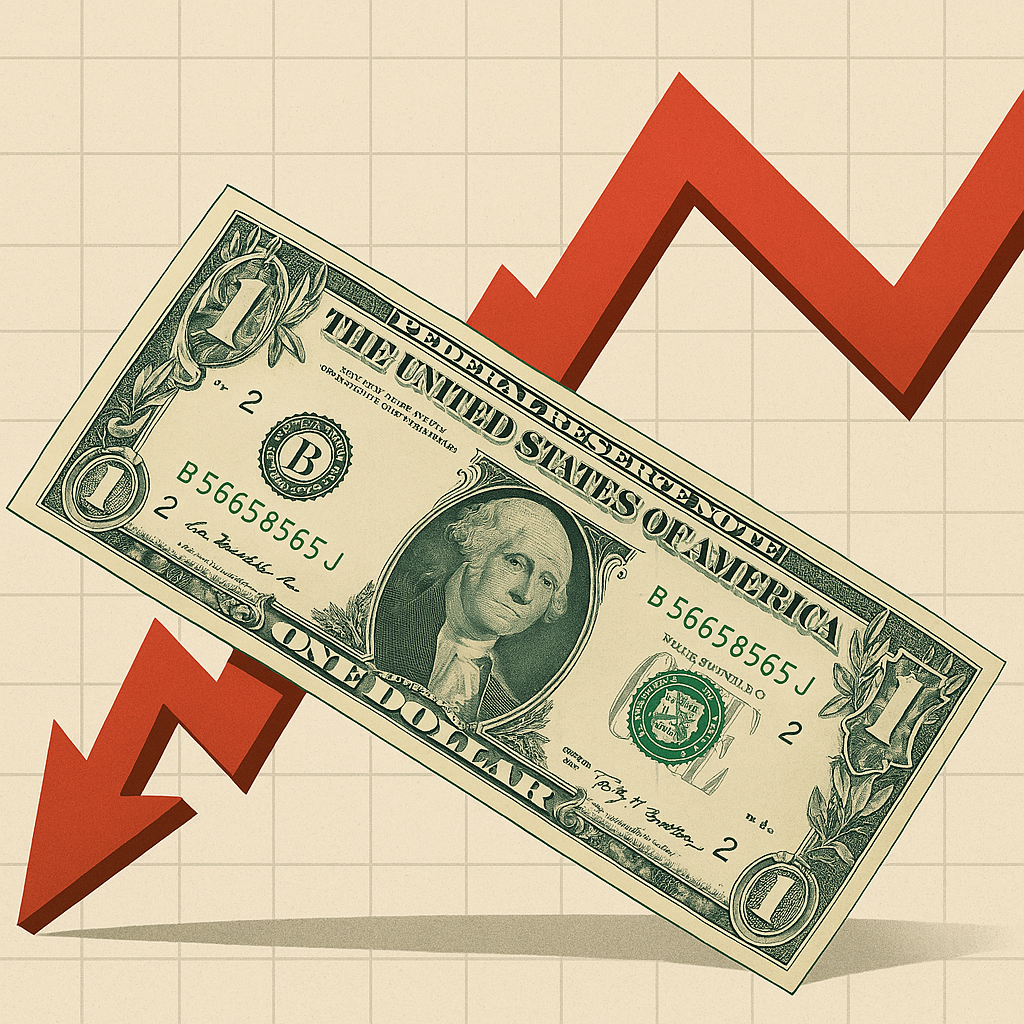
In a significant turn of events, global investors appear to be losing confidence in the U.S. economy, marking a worrying trend for markets worldwide. This shift is particularly evident as the U.S. Dollar Index slips below the 100 benchmark, and American bond yields surge to their highest levels in decades — clear signs of mounting pressure on the U.S. under the leadership of President Donald Trump.
For months, global markets, including the American stock exchanges, were anxiously watching the bold and often confrontational decisions made by President Trump. His aggressive use of tariffs and critical comments about other countries' currencies and economic policies created ripples of uncertainty worldwide. However, a sharp reversal seems to be taking place now.
The primary driver behind this shift is the mass exodus of institutional investors from U.S. markets. Data indicates large-scale capital outflows from the U.S., as investors seek safer grounds amid concerns about rising inflation, trade wars, and policy unpredictability. As a result, the Dollar Index — a key indicator reflecting the strength of the U.S. dollar against a basket of six major global currencies — has slipped below 100. Historically, this drop signals a warning to U.S. policymakers, urging a revaluation of economic strategies.
Adding to the tension is the unusual behavior in the U.S. bond market. Traditionally, when investors sell off equities, the capital flows into government bonds, which lowers bond yields. However, the current scenario is highly unusual: both the equity and bond markets are witnessing simultaneous sell-offs. This rare event reflects heightened panic and lack of faith in the stability of U.S. economic policies.
Bond yields, especially the 10-year Treasury yield, have surged past 4.5% — a level not seen since the early 2000s. Rising bond yields typically indicate falling bond prices, meaning large-scale bond selling is underway. Speculation points towards significant offloading by foreign holders, especially Japan and China, who together own vast sums of U.S. government bonds. Given the ongoing U.S.-China tensions, it is plausible that China has intensified its selling of U.S. debt to push back against Washington's economic aggression.

Interestingly, this financial turmoil has coincided with President Trump's subtle policy reversals. One notable move has been the removal of reciprocal tariffs on specific electronic items, including goods imported from China. This suggests an attempt to soften the blow on American companies and the broader market, especially since the tech sector is heavily reliant on imports from China. Trump's administration had previously introduced reciprocal tariffs as part of its protectionist policies, but recent exemptions indicate a strategic retreat.
In summary, the combination of a weakening Dollar Index and surging bond yields is a strong signal of stress within the U.S. economy. It also reflects global investors’ dwindling trust in the American market amid policy inconsistency and geopolitical tensions. As the Dollar weakens and bond yields climb, experts predict more U-turns in Trump’s policies in the coming weeks, particularly concerning tariffs and trade restrictions.
Markets and investors will be watching these developments closely, as further deterioration could lead to increased global market volatility. For now, the financial world waits to see whether the U.S. administration can recalibrate its policies and restore confidence, or if the situation will continue to deteriorate.
Disclaimer:
This article is for informational purposes only and does not constitute financial advice or a recommendation to buy or sell any securities. The views expressed are based on publicly available information and market analysis at the time of writing. Readers should conduct their own research or consult a financial advisor before making any investment decisions.




